As the youngest child in the house, I was always assigned the easiest housework and the rest was saved for my beloved brothers. And preparing joss paper was forever one of my favorite chores. Back in the day, my mother used to bring home a stack of colorful paper sheets and told me to fold them into clothing shapes. I still vividly remember how excited I got when I was assigned to do such things because it was an extremely entertaining chore for a child, especially me. As I grew a bit older, I came to know the purpose of these papers and why people often burned them on special occasions. Appearing as an ancestral worshipping activity, joss paper burning represents a lot of cultural traditions and beliefs of the Vietnamese people.
Contents
From History to Modern Practices
A Chinese Origin
Before starting, I’ll give you a brief definition. Joss paper, or ghost money, are papercrafts which have specific colors and marks to symbolize money and other wealthy materials. The act of burning these papers is believed to send that amount of money for one’s deceased family members and relatives to the afterlife. As interesting as it is today, the practice’s initial purpose was a bit different. Joss paper burning is originally from China, dating back to the first dynasty – Qin, and even before that period.
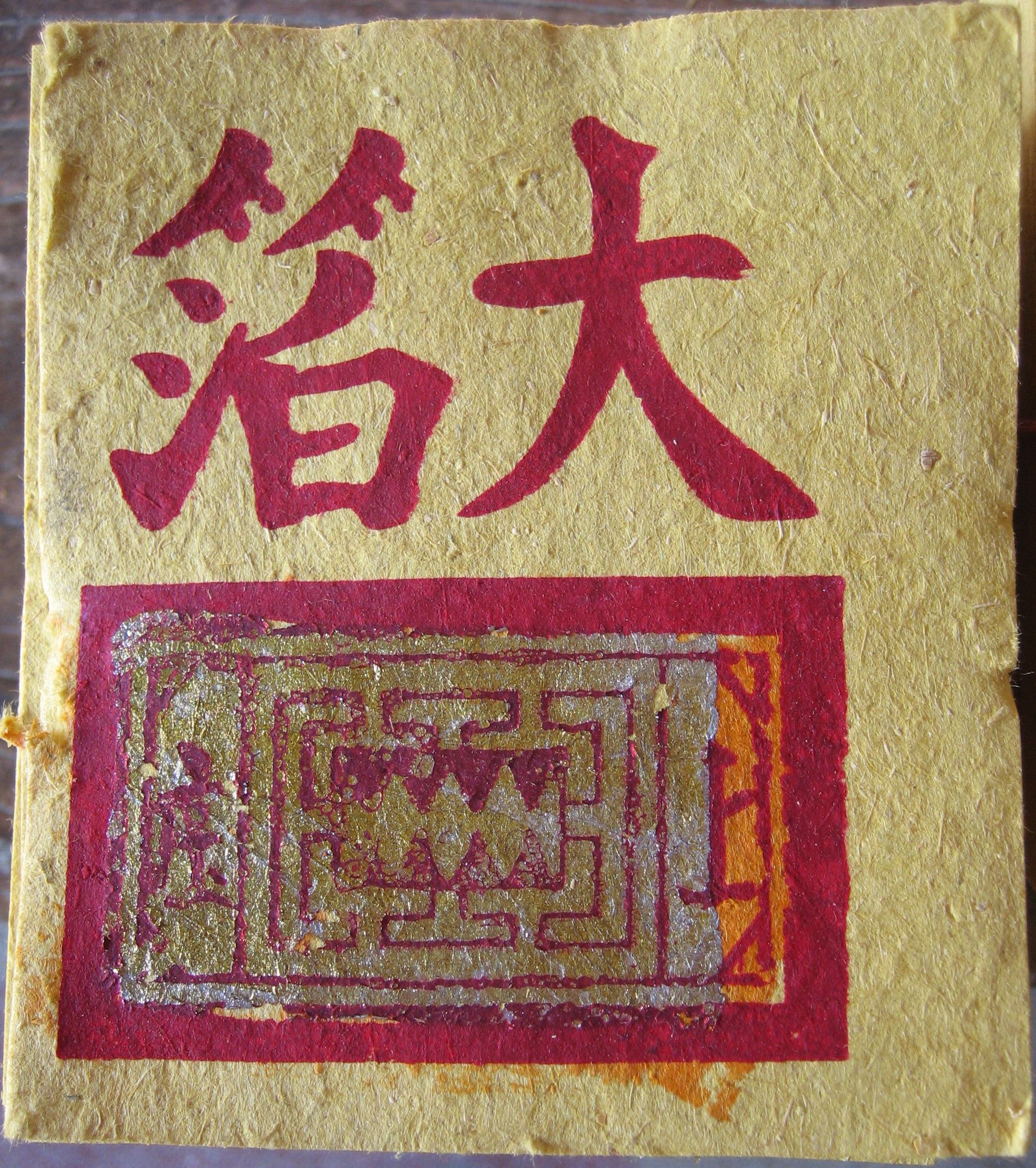
When China was still an imperial country, there were certain customs to follow according to the social hierarchy. As for the highest class like lords and emperors, they would have gold, gems, and other kinds of treasures buried along with their tombs when they died. Until the Qin dynasty, they even made pottery soldiers and servants for Qin Shi Huang – the first emperor of unified China – to continue to protect and serve him in the afterworld.
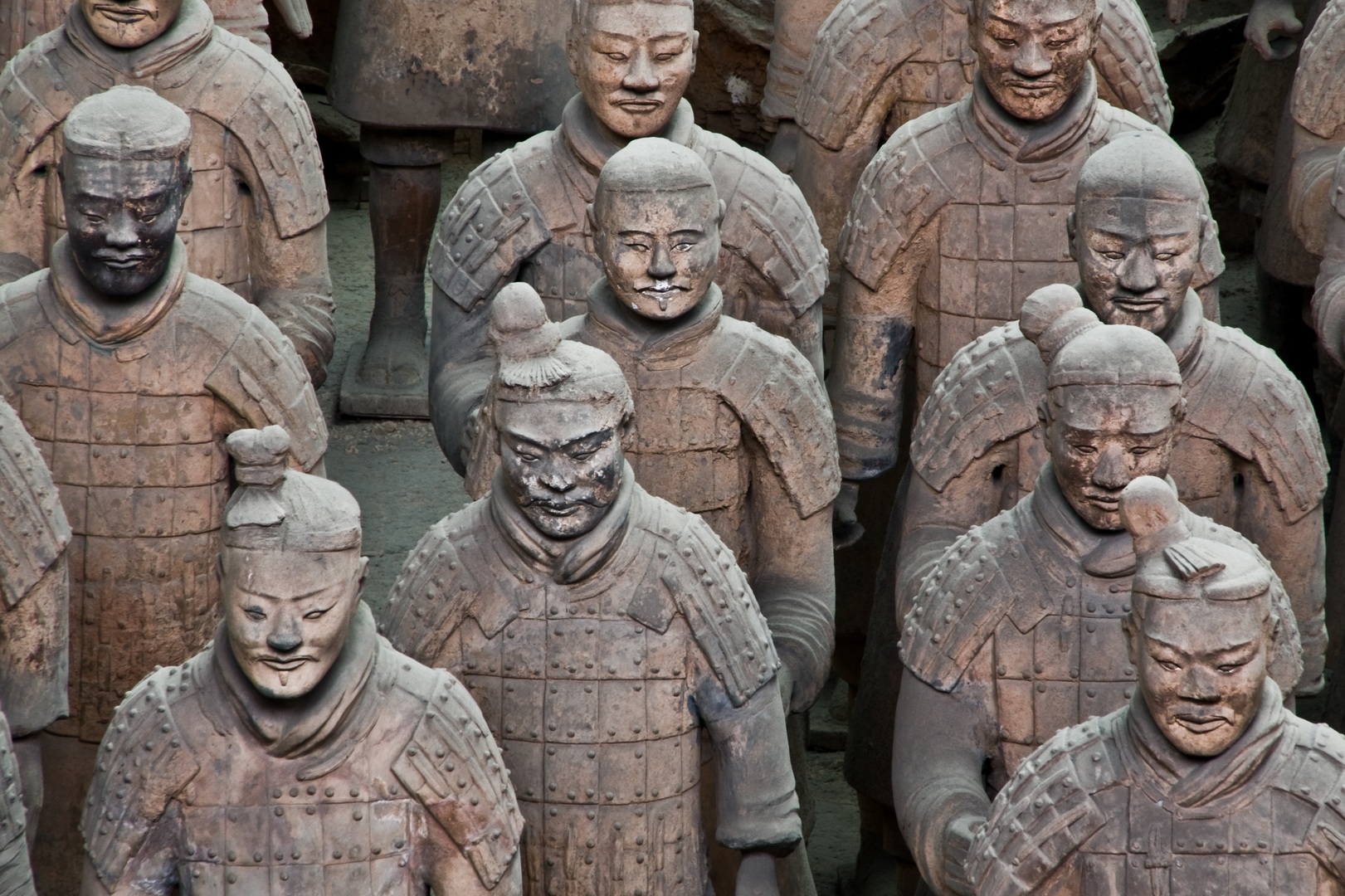
This practice changed but the belief to send luxurious materials along with the dead still remained. Rather than using real treasures, they would bury joss paper as grave goods and scattered them during the funerals. Later on, spirit money became more popular and was instead burned for these worshipping rituals. I love imagining the burning paper, as it almost seems like as the paper burns, it slowly appears in the other world the moment it turns to ash.
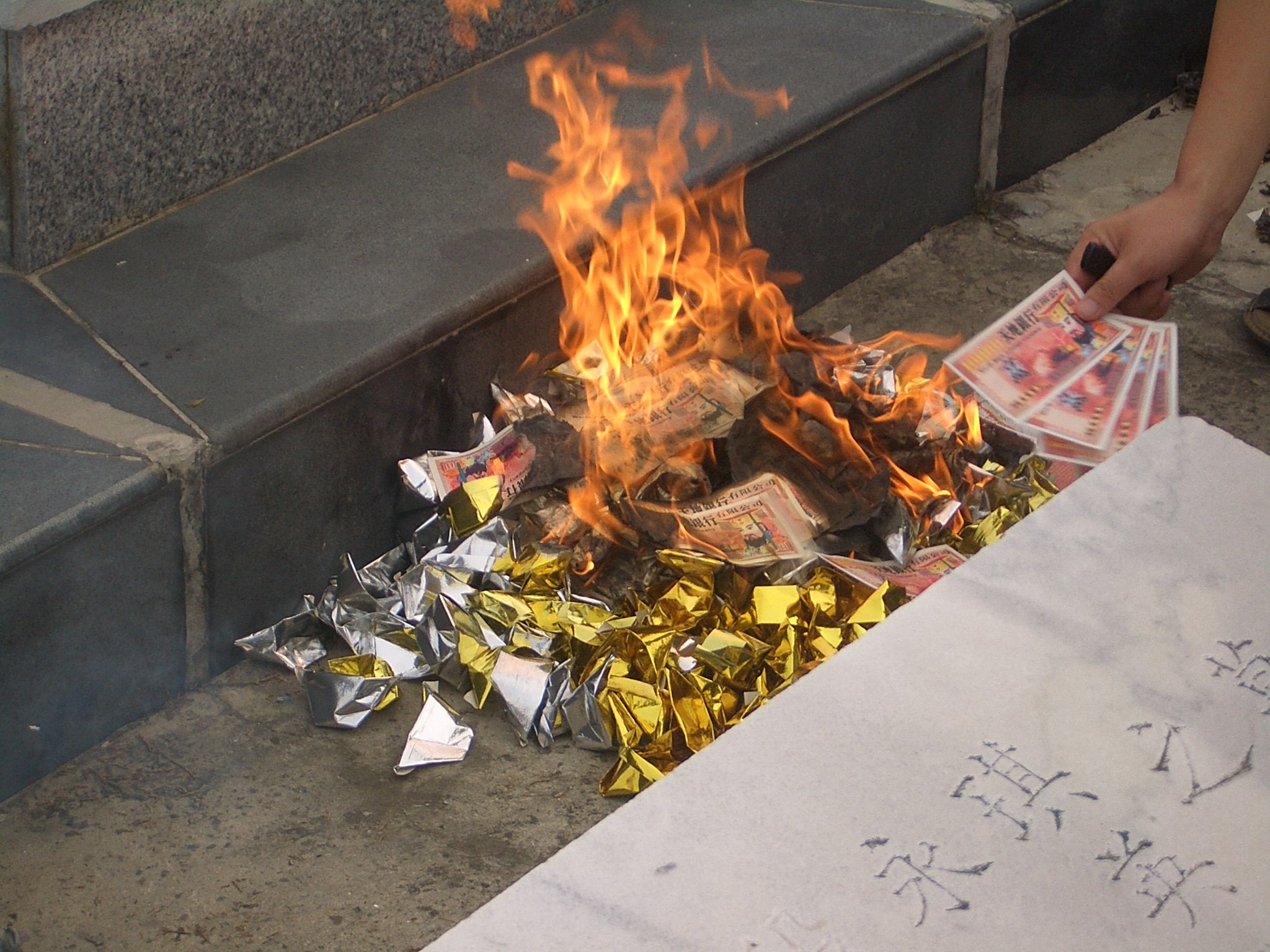
What It Looks Like in Vietnam
Due to our geographical location and history, Vietnam adapted a number of customs and cultural traditions from China and this is one of them. Specifically, Vietnamese people often burn joss money during the full-moon days of July in the Lunar calendar. This month usually falls in August of the regular calendar and is known as “the month of forsaken spirits”.
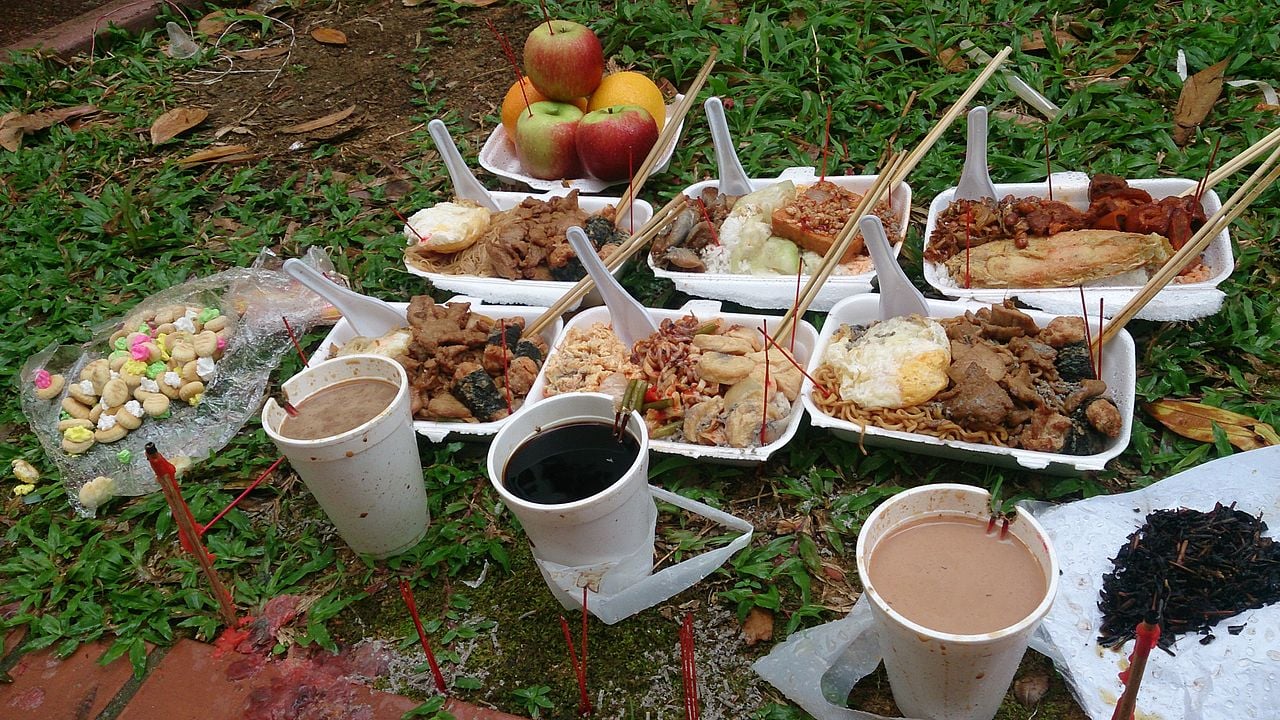
To our common knowledge, hell will open its gate once every year during this month for the lost spirits to visit the mundane world. Burning joss money during these days is considered as making offerings to the wandering souls without any families to remember them in the living world. If you burn joss paper for these spirits, it also means you will have a safe and peaceful time during this month because these spirits are believed to cause misfortune for living people.
Besides July rituals, Vietnamese people also burn ghost money on other special holidays. For example, we often burn the paper on Lunar New Year’s Eve in order to commemorate our ancestors. There will also be a typical worshipping tray with some savoury dishes, fruits, and sweets as well. The tray needs to be comprised of things that we have regularly for a meal or maybe even heartier snacks to show respect to our ancestors. Burning joss paper is not just an offering, it also sends our prayers for our ancestors’ souls and wishes upon a new year with luck, health, and prosperity. This is a meaningful moment that honors tradition of appreciating our parents and forebears. Time will pass, but respect always remains.
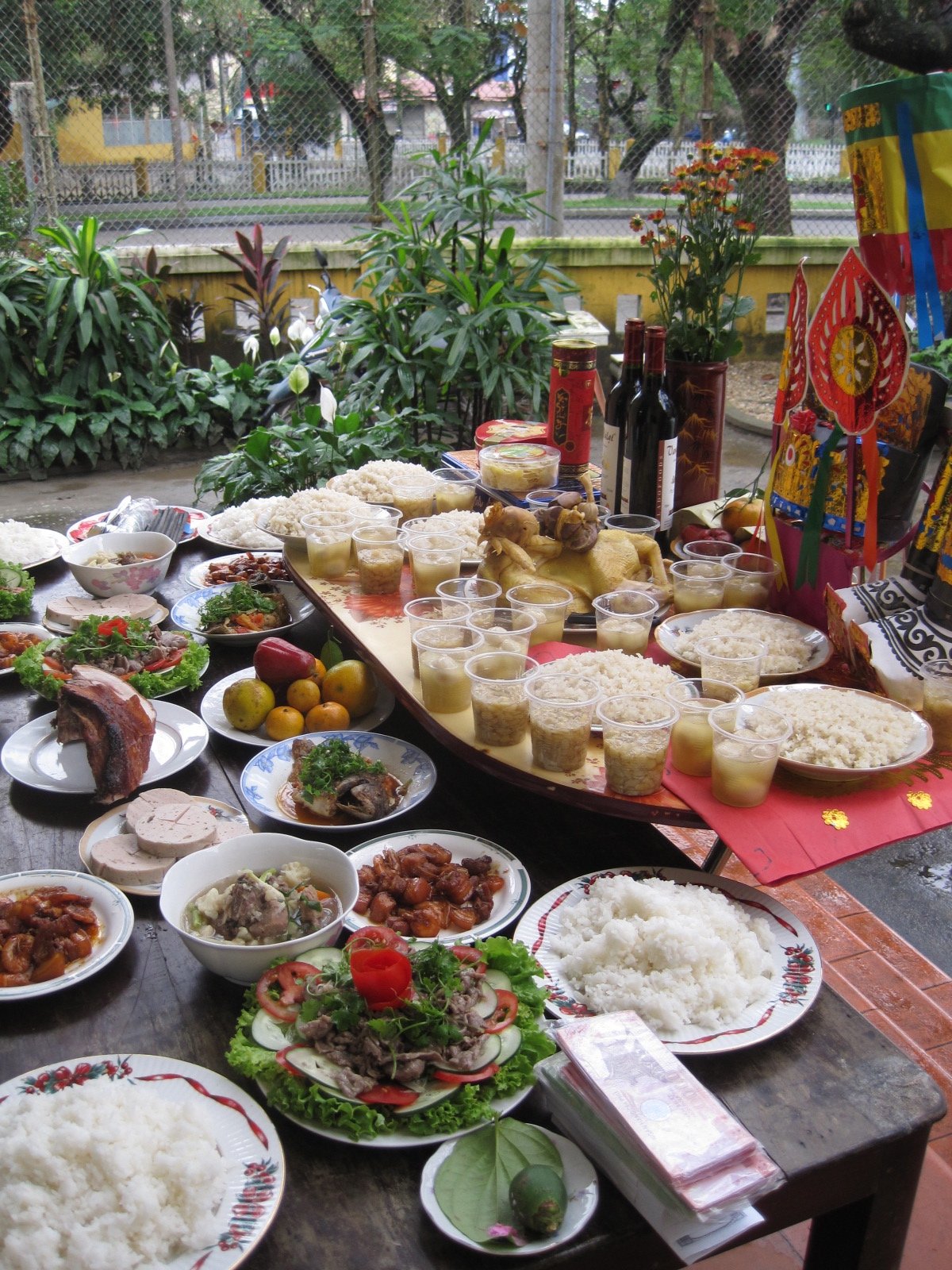
Funerals and death anniversaries also include this custom, with larger feasts and more people attending.
Today, joss paper has expanded into various forms such as houses, mobile phones, computers, televisions, and even motorbikes. They are made to look exactly like real objects. Anything necessary for living a life, somebody has created it in joss paper. This modern movement of a long-standing tradition in keeping with the increasing concern for environmental protection, has become a controversial topic in Vietnam. But either way, we should keep in mind the main good points of respecting and honoring our ancestors, and gradually getting rid of the unnecessary additions to this interesting tradition.
A Guide to Joss Paper Burning
After a small lesson of its history, I believe it’s time for practice! Let’s see how the Vietnamese prepare for a joss paper burning ritual.
Where to Buy Joss Paper
You can easily buy joss paper in almost any local market in Vietnam. It’s quite cheap, it should cost around 5,000 VND to 8,000 VND for each stack, and 10,000 to 15,000 VND for a complete and basic set.
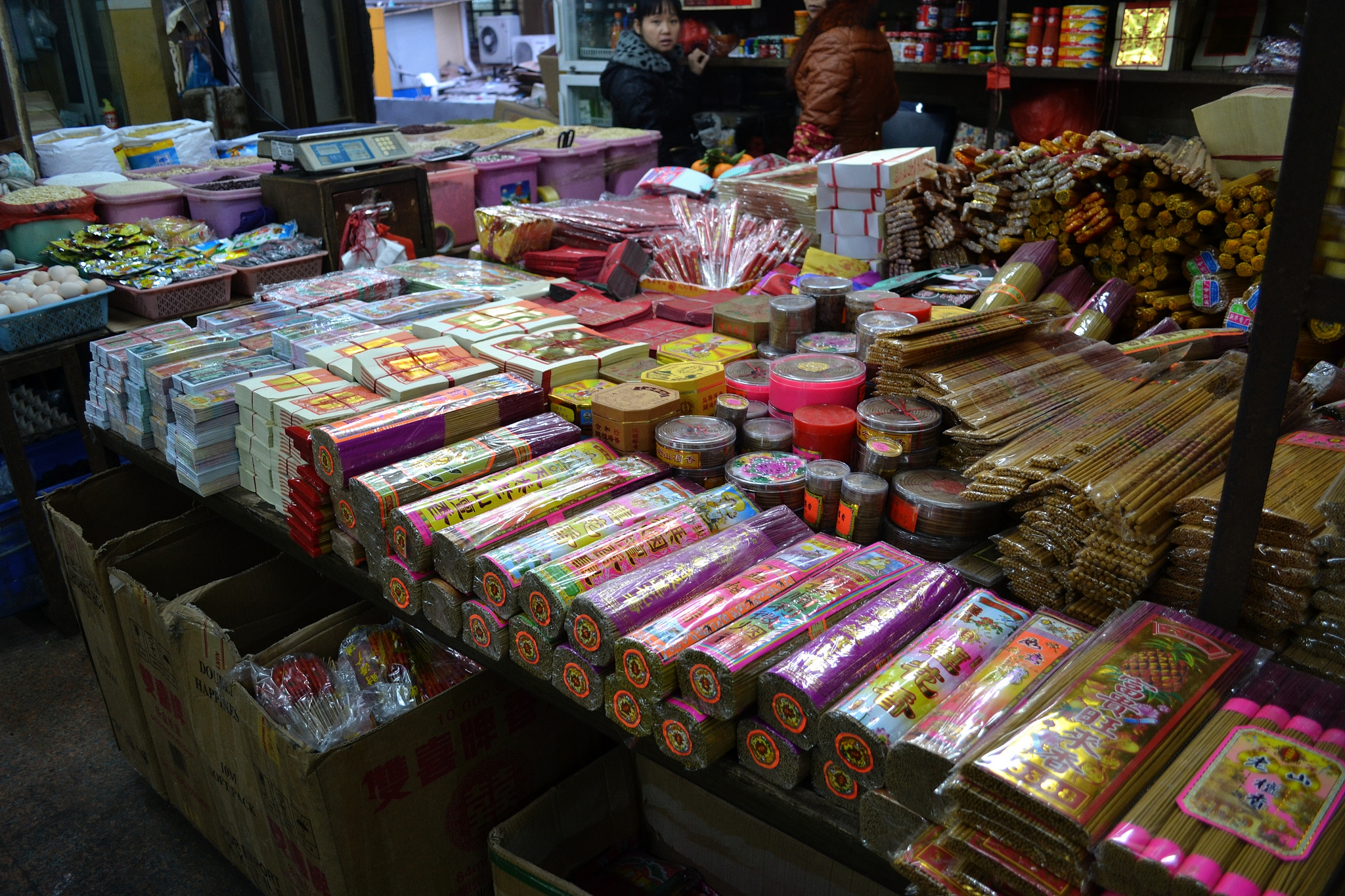
In Ho Chi Minh City, the most famous and concentrated place of producing joss paper is on Nguyen Duy and Ba Dinh street in District 8. This neighborhood is home to a large number of households making ghost money. In the 60s and 70s, many people decided to pursue this business and passed it onto the younger generations. Some families managed to keep this traditional occupation and it advanced into family-run factories, rather than making joss paper manually.
Most of the products here are simple and small, including paper money, colored sheets, and other kinds of papers to represent clothes. According to locals, these households hardly take a break from their business. They produce joss paper every day from early morning to around six in the evening. If you’d like to discover Saigon joss paper town, swing by and take a tour!
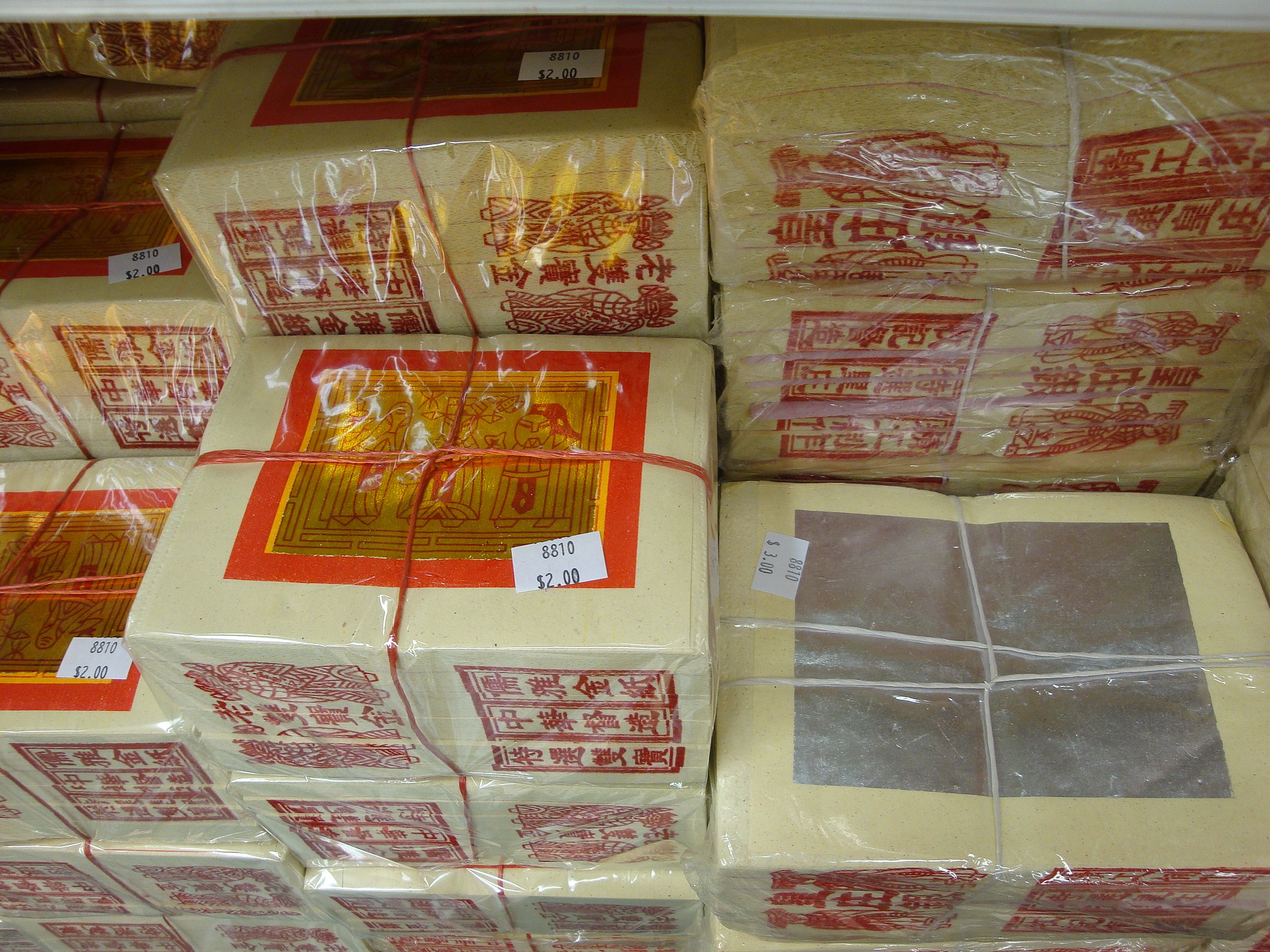
For those in Hanoi, there’s a whole village famous for making joss paper in large sizes and complicated forms to serve local worshipping rituals annually. It’s Phuc Am village, located around 30 kilometers away from Hanoi center. Like many other traditional handcrafting villages in Vietnam, people here have been making joss paper for a long time and the tradition is still going today. There are roughly 180 households earning a living on this business, ten of which are small production factories. Phuc Am village specializes in making replicas of humans and animals but they also have other joss products in a lot of different forms, shapes, and sizes. You can actually see paper servants, sophisticated clothes, electronic devices, and tons of other colorful joss paper.
How to Burn Joss Paper
I’ll guide you through a basic worshipping ritual of the Vietnamese people that includes joss paper burning. Normally you’ll need to prepare food first like I mentioned above in Lunar New Year’s Eve ritual. A complete set of food needs to consist of savoury dishes, fruits, sweet snacks like cakes and candies. But the amount and type of food may vary depending on the family size and current situation of the ritual.
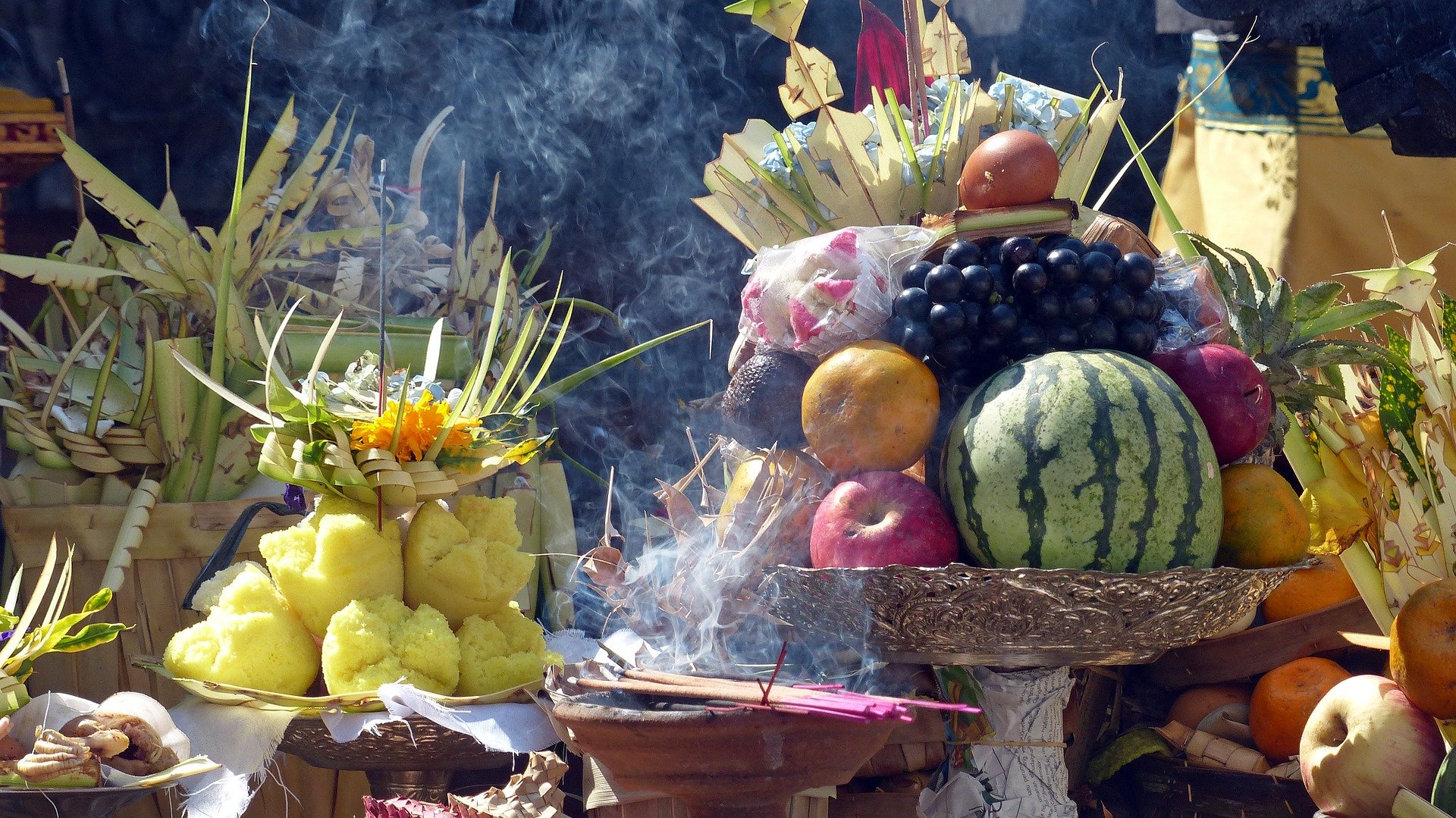
Joss paper needs treatment before we can burn it. For a traditional and basic set of joss paper, you’ll have to fold the clothing sheets to make them “usable” in the afterworld. It’s rather easy since they’re already cut with certain lines and you just have to fold according to the cuts. After that, we put the sheets on a tray, the larger pieces are placed on the bottom and then the smaller pieces pile on top. The joss paper tray is placed near the dishes during the ritual.
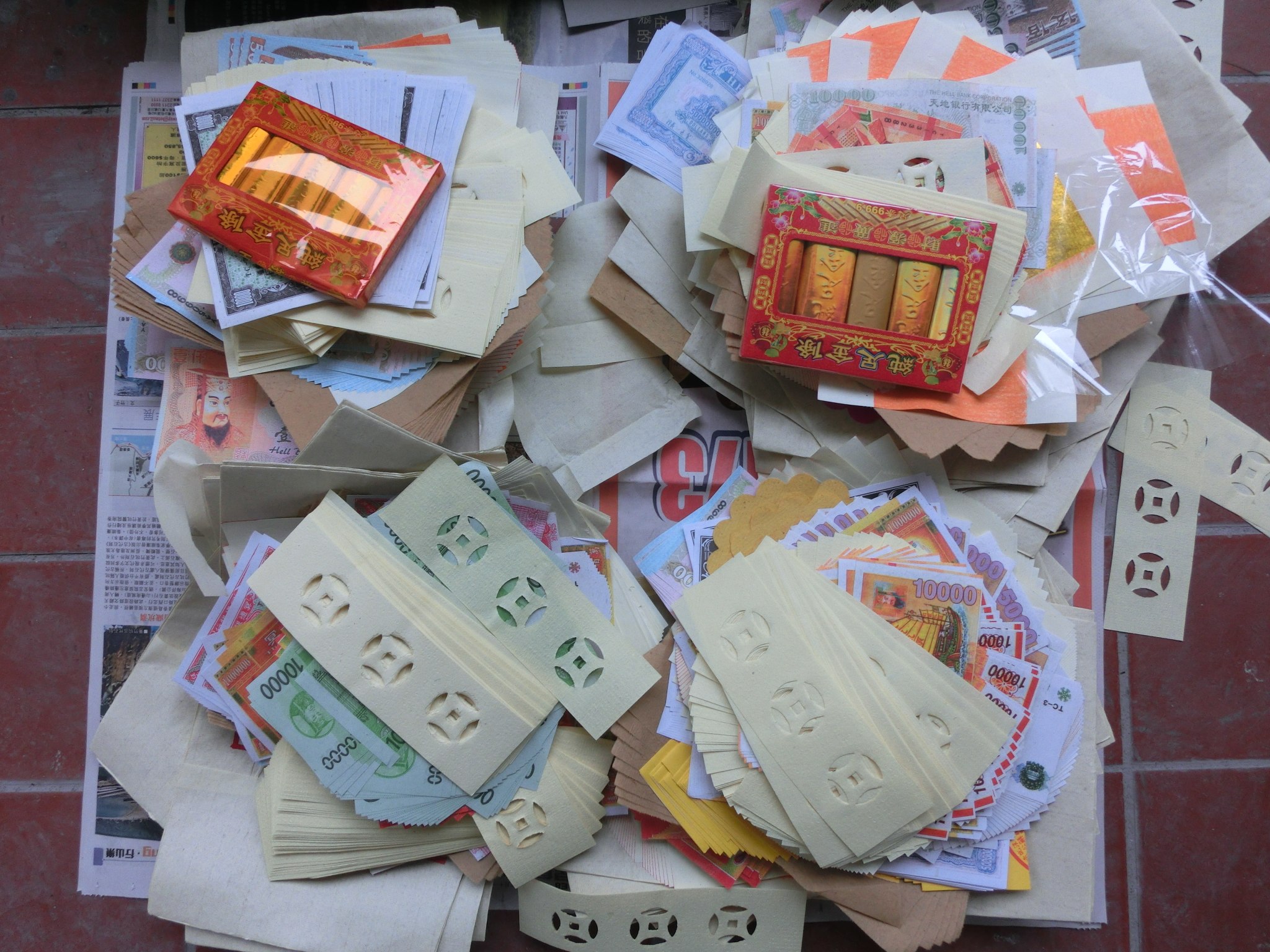
After preparing the food and joss paper, we will present them together on a table with an incense holder. The ritual host then will light several incense sticks and say prayers for the ritual. This act is believed to also send the meal to the deceased, and they will finish their meal by the time the incense sticks are all burned up. Therefore, eating food before this point is not allowed, especially for children as it’s considered to be disrespectful to the ancestors.
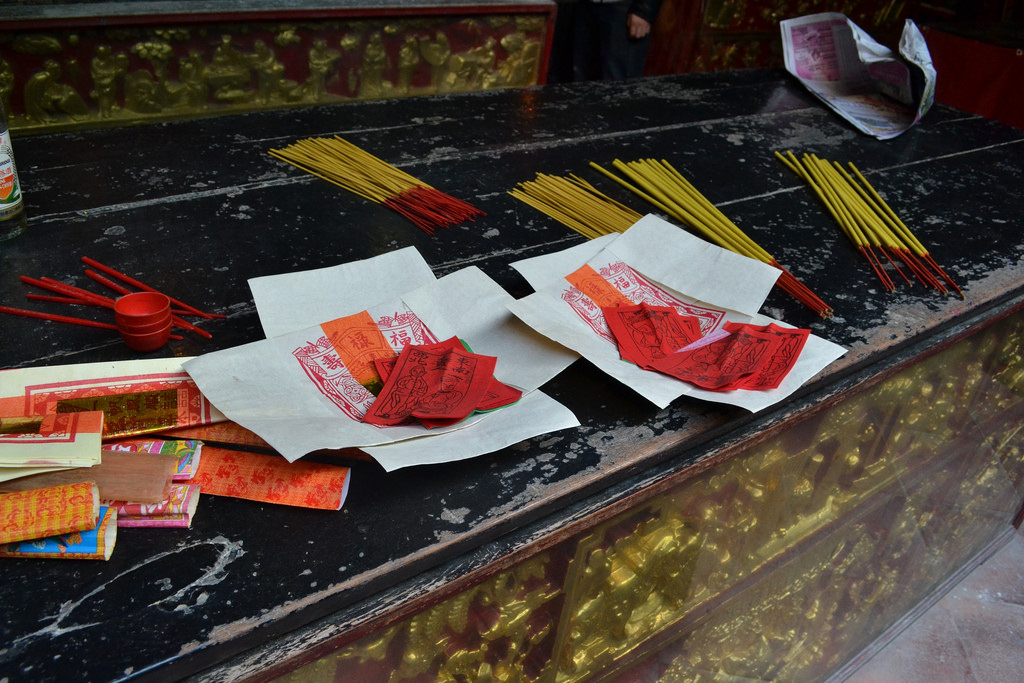
Now it’s time to burn ghost money! It’s necessary that you have a joss paper burner to prevent ashes from dirtying your space. Start by burning a piece with a lighter and when the fire is big enough, put the rest of the paper in. But remember to do it slowly or else the fire might get too big. Pray while watching the paper slowly turn into ash. It is very amazing, I must say! After burning all the paper, you’ll pour a little water onto the ashes to ease the heat and you’re done!
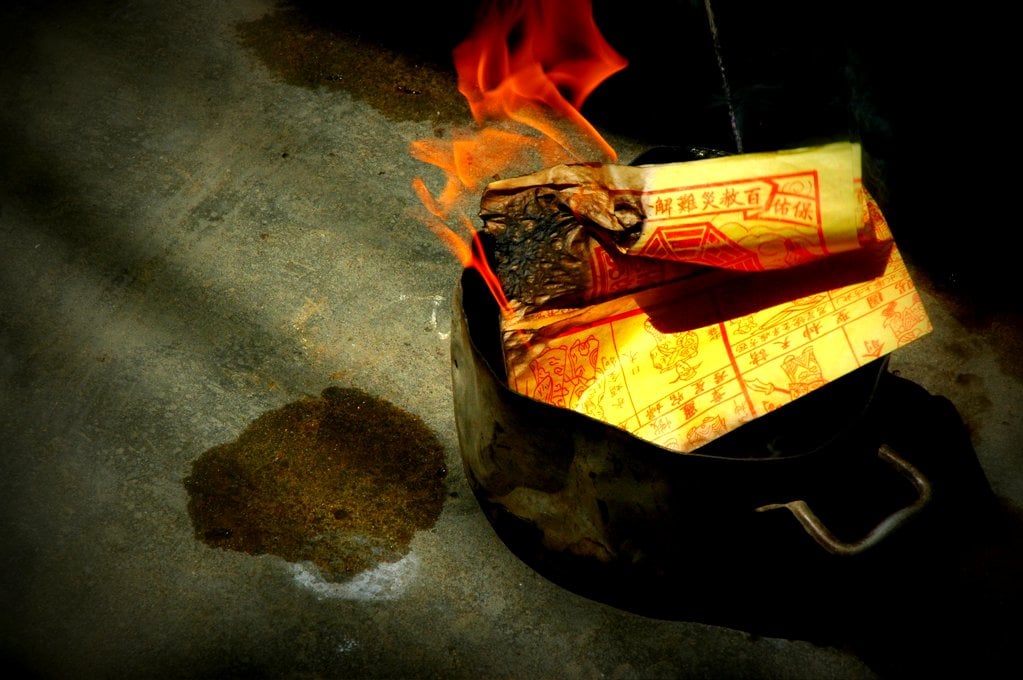
This tradition displays a typical and honorable trait of Asian people in general, which is respecting our ancestors in a uniquely spiritual way. Check out our blog for more articles about Vietnamese cultures and traditions!
The Beginner’s Guide to Vietnamese Gestures
Things You Need to Know Before Joining a Vietnamese Wedding in Saigon
Hoi An’s Traditional Festivals: Immerse Yourself in Culture and Fun
If you enjoyed reading this article and would like some more fun info about what to see, do and eat (and a bunch of interesting cafes!) in Vietnam, follow us at the 4U Trip!
